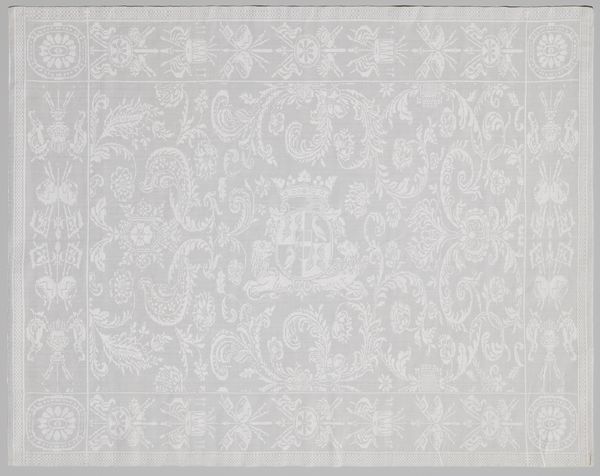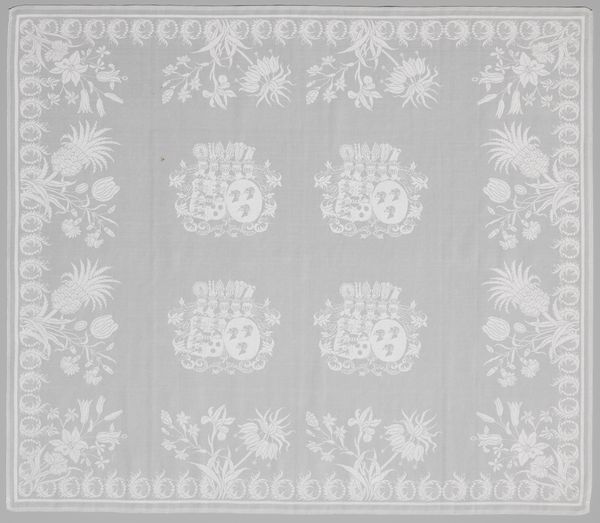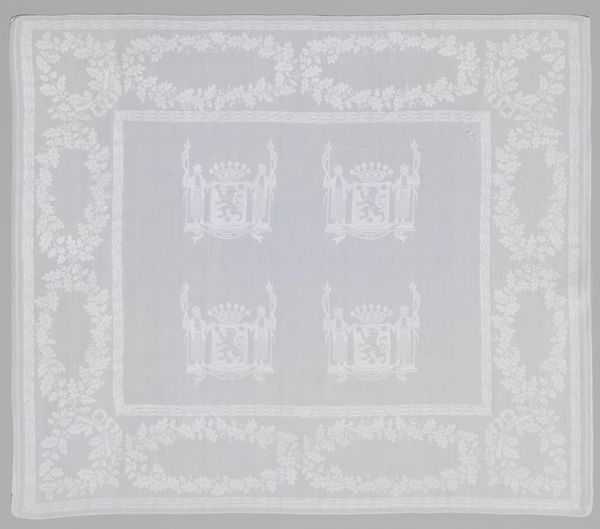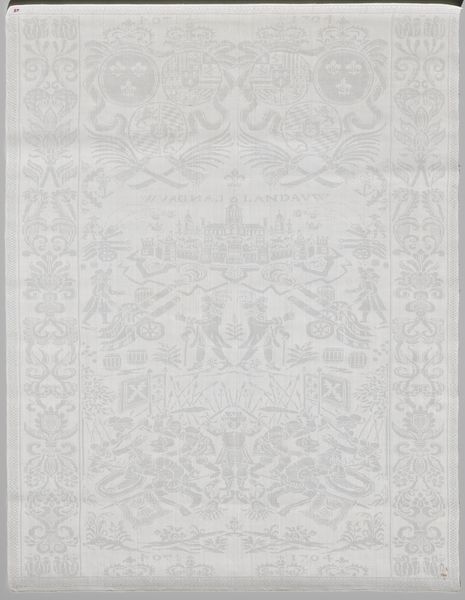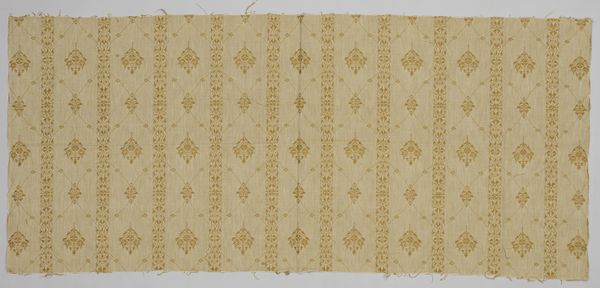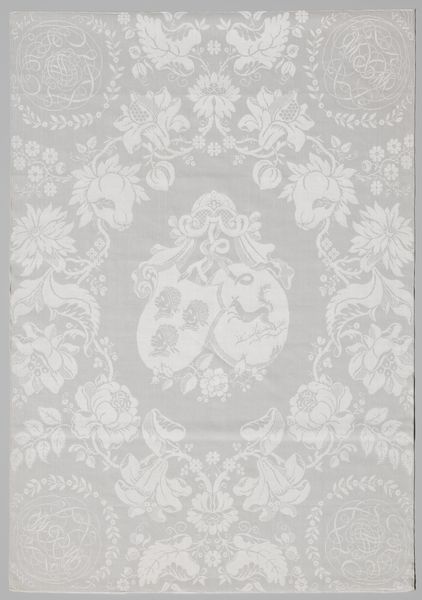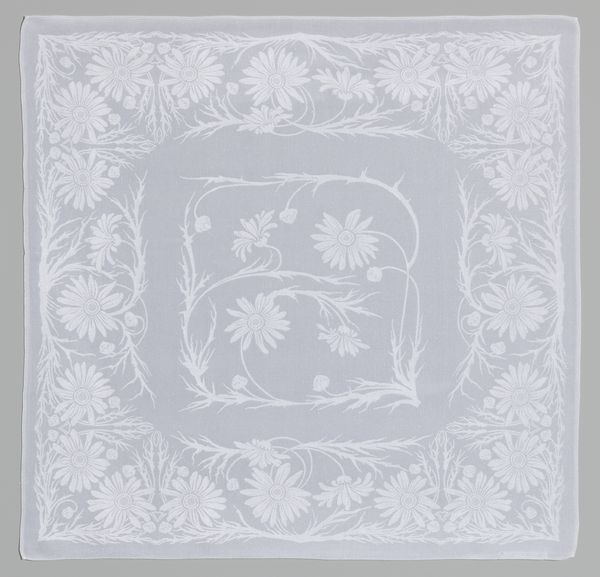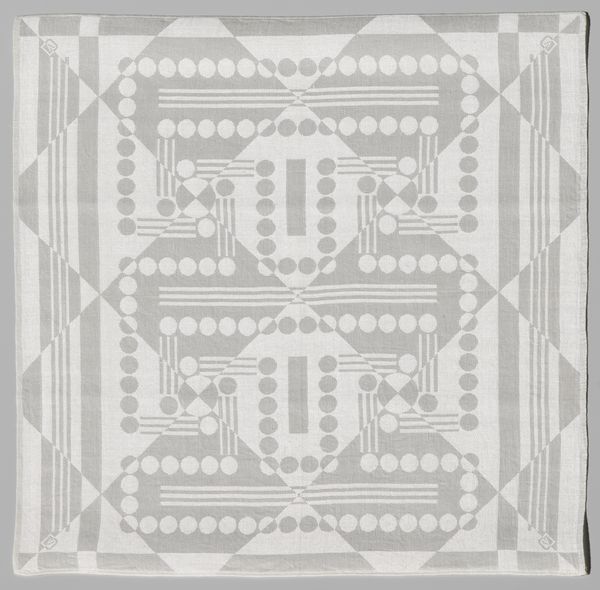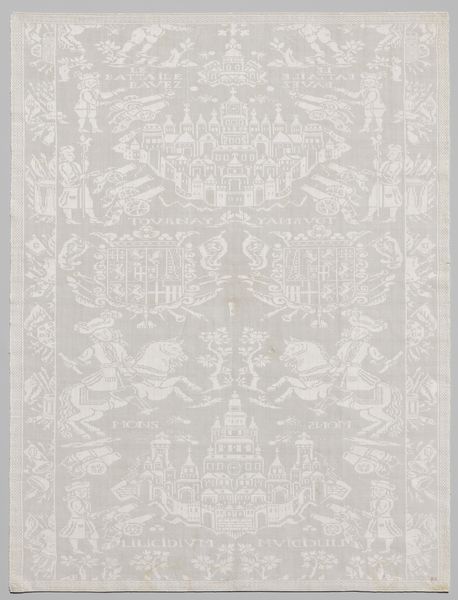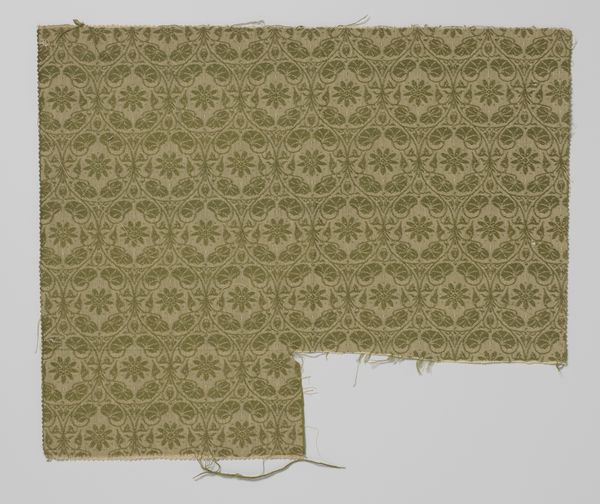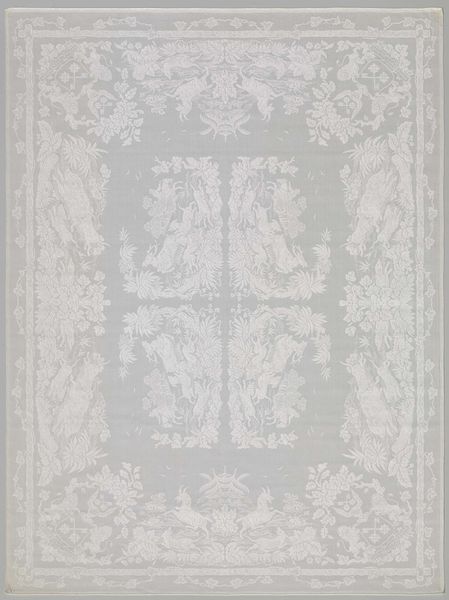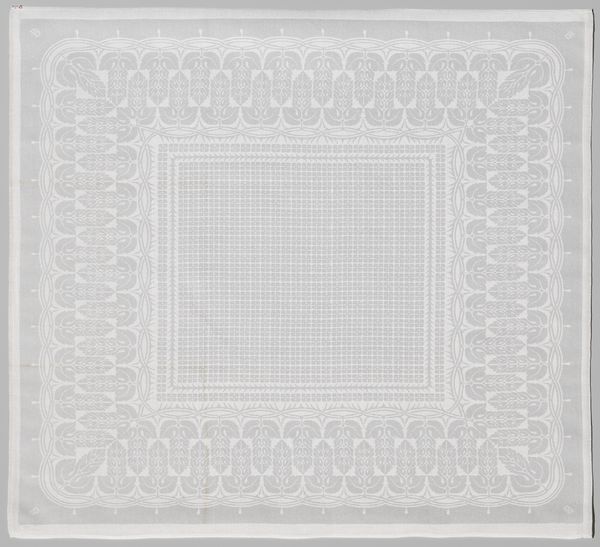
Servet met wapen Wilhelmina Henriette van Lynden tot Oldenaller met jaartal 1857 1857
0:00
0:00
weaving, textile
#
natural stone pattern
#
weaving
#
textile
#
pattern design
#
repetitive shape and pattern
#
fabric design
#
repetition of pattern
#
pattern repetition
#
textile design
#
imprinted textile
#
layered pattern
#
combined pattern
Dimensions: height 85 cm, width 115 cm
Copyright: Rijks Museum: Open Domain
This damask napkin, made in 1857 by an anonymous artist, features the coat of arms of Wilhelmina Henriette van Lynden tot Oldenaller. It invites reflection on how textiles can embody social status. The napkin's intricate weave and heraldic symbols declare the owner’s noble lineage in the Netherlands. Damask weaving, a skill passed down through generations, was often commissioned by wealthy families, reflecting their economic power and social prominence. The use of heraldry connects the owner to a lineage of power. The coat of arms is a visual shorthand that communicates social standing, values, and history. To understand its significance fully, we might explore Dutch aristocratic customs, family archives, and textile production methods of the time. This napkin transcends its utilitarian function, becoming a historical artifact that bears witness to a specific time, place, and social structure.
Comments
No comments
Be the first to comment and join the conversation on the ultimate creative platform.
